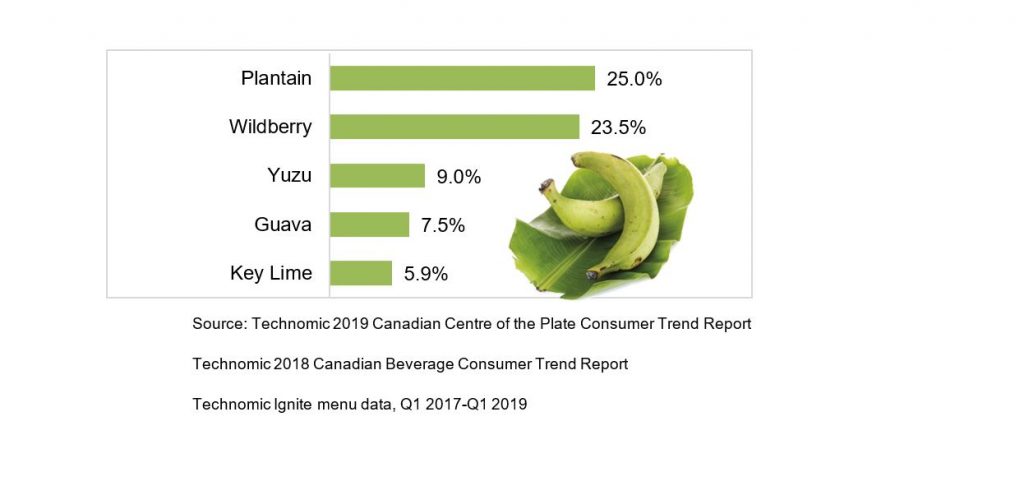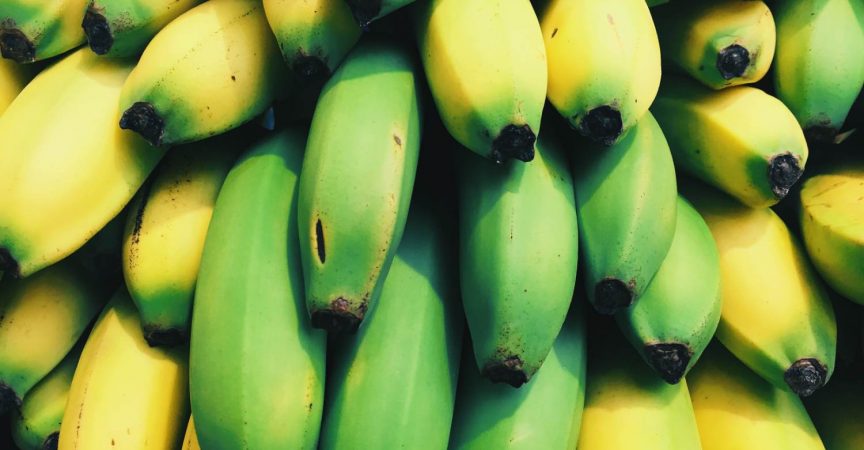Fastest-Growing Fruits
Here we look at the fastest-growing fruits across all mealparts on Canadian menus over the latest two-year period.
Global fruits are growing, with plantain and yuzu up 25.0% and 9.0%, respectively. Operators are spotlighting banana’s less-sweet and starchier Latin American cousin most often as a side to other Latin entree dishes. And Japanese yuzu is commonly highlighted as a tart addition to condiments in Asian dishes. For example, Pidgin in Montreal offers chicken karaage with spicy yuzu kosho mayonnaise. With almost a quarter of consumers (24%) reporting that they would be likely to order meat-based dishes if they were made with ethnic flavours and ingredients, restaurants should continue to highlight these global fruits in traditional and ethnic entrees.
In addition to plantains, another Latin fruit on the rise is guava (+7.5%), though its applications are more on the beverage side of the menu. Concepts are adding this tropical vitamin A- and vitamin C-rich fruit in smoothies, teas and juices, pairing its sweet flavour with other tropical fruits, such as pineapple and mango. For instance, Extreme Pita menus its Mango Tango Fruit Smoothie, featuring guava juice and mangos. Since over a quarter of consumers (26%) express that their beverage preferences tend to change depending on the season or time of year, operators should roll out limited-time, guava-infused spring and summer drinks to give their beverage menus a refreshing appeal for the warmer months.
Wildberry and Key lime increased by 23.5% and 5.9%, respectively, showing that
operators can innovate by offering a new spin on familiar flavours. For example, wildberry is a combination of multiple familiar berries (such as strawberry, blackberry, blueberry and more), which makes the taste profile unique. And Key lime has a slightly tarter flavour than regular limes. Featuring these ingredients offers consumers a distinct, yet still recognizable option. Restaurants should continue to incorporate these diverse, but familiar, fruits to retain consumers who are not as experimental.










